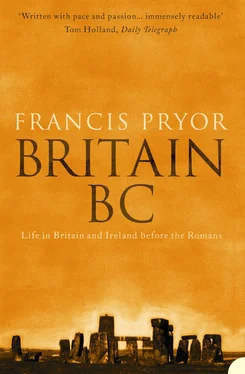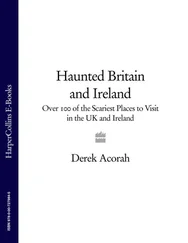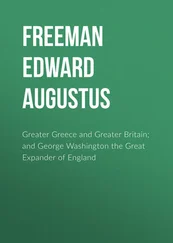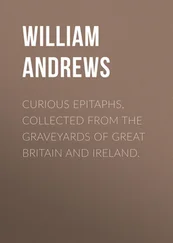Archaeologists often seek to demonstrate seasonality when they suspect that a site was only occupied at a certain time of year. There are many ways of doing this, and it’s much easier to demonstrate when a site was occupied than when it wasn’t. Absence is invariably harder to pin down. Bearing that in mind, a close examination of the eruption and growth patterns of horse and red-deer teeth found at Gough’s Cave suggests that the animals were killed in two seasons: in late winter or spring, and in the summer. This would suggest that the group moved away from the cave in the autumn. Perhaps that was when they went to the North Sea coast.
The final cold period, the Loch Lomond sub-phase, lasted from 10,800 to ten thousand years ago, and thereafter we’re in our own postglacial or Flandrian period, which I’ll cover in the next chapter. It was very cold in Loch Lomond times: there was ice over the Highlands of Scotland, winter sea-ice as far south as Spain, and most of Britain and north-central Europe was tundra. Scandinavia north of Denmark was under ice, and the Baltic Sea was a seasonally frozen-over lake. Along with the cold came dryness, and this suited the development of the particular dwarf grasses, mosses and lichens preferred by animals such as wild horse and reindeer. We must imagine that herds of reindeer migrated across the plain that was later to form the North Sea, between Britain and the continental mainland. Like the Lapps of today, people would have followed behind the herds, taking beasts when the time and place was appropriate. It’s an elegant and rather attractive idea, but what is the evidence to support it?
The old road from Peterborough to Northampton is very familiar to me. It twists its way along the Nene valley, swerving randomly from one side to another. Nowadays a soulless dual carriageway bypasses anything of interest, but that old road went through all the villages and hamlets. One of these was the pleasant village of Earls Barton, which nestled in what was still then the remote peace of the Northamptonshire countryside. It was in a low-lying, flat, tranquil and prosperous landscape, quite unlike the more rugged uplands characteristic of places like Creswell Crags and Cheddar Gorge – the natural habitat, as I once believed, of Late Upper Palaeolithic man. The boring reality is that evidence for him (and her) in open and less protected environments has mostly been removed by later geological events.
I used to travel that road to Northampton quite regularly in the 1970s. A few years later, in 1982, an extraordinary discovery would be made that would forever tie Earls Barton into the frozen world of the Loch Lomond cold phase, over ten thousand years ago. Not just that, it would weld this small part of rural Northamptonshire to more distant horizons, far across the North Sea. For me at least, the remote past was coming home. Immediately I could identify with it.
The discovery was made unexpectedly in a gravel quarry in the Nene valley, just outside the village, which is well known to historians and archaeologists because its church boasts one of the finest Saxon towers in Britain. The quarry revealed a strange-looking object made in reindeer antler and known as a ‘Lyngby axe’. The antler itself was radiocarbon dated to just over ten thousand years ago – in other words to the very end of the Loch Lomond sub-phase. At this time sea levels were lower because so much water was locked up in ice, and as a consequence the southern North Sea would have been a low-lying plain.
Lyngby axes are strange-looking objects that are fashioned from the main shaft of a reindeer’s antler which has been shortened and all the side-pieces trimmed off. The end result more or less resembles a modern policeman’s baton. They occur at about forty sites around the edges of what is now the southern North Sea basin, in Denmark, Germany, Poland, Holland and, with the discovery at Earls Barton, Britain. Most have been found on their own, as isolated finds. What were they? Perhaps it’s easier to state what they weren’t: they weren’t axes or wood-working tools of any sort. The name is entirely inappropriate; maybe, like the Red ‘Lady’, we should refer to them as Lyngby ‘axes’ – but life’s too short.
The Earls Barton example was large, generally well-preserved, and heavily used. There was no evidence that it had ever had an inserted flint or stone cutting edge to act as a blade. So it was made to be used on its own. A number of worked, step-like or scalloped facets distinguished it from some of its continental cousins, and showed that it had been used to work softer materials than stone, or indeed wood. In their study of the Earls Barton piece Jill Cook and Roger Jacobi were also able to rule out its use as a slaughterman’s pole-axe, a weapon, or a pick or digging-stick, 10 and suggested that the wear-patterns implied that it had been used to work something like leather, meat, fat or plant material. They thought the scalloped bevels were secondary – i.e. not to do with its actual use – and could have been formed, for example, by being slung from a tent or from wear caused by rubbing against a harness or sledge fitting.
Reindeer were actually killed by hunters using flint-tipped arrowheads whose shafts were sometimes deliberately fashioned in two pieces, to break on impact. One particularly well-preserved site of this period (about ten thousand years ago), at Stellmoor in north-western Germany, has revealed numerous reindeer bones with flint arrowheads, or their tips, still in place within them. Some animals appear to have been hit twice, and it has been suggested that the wounds indicate that the hunters worked in groups, and not alone. Evidence from the growth-pattern of the many antlers found suggests too that the hunting took place in autumn or early winter, and that large numbers of people and animals may have been involved. Bodil Bratlund, who studied the Stellmoor material, suggested that the evidence hints at ‘the communal drive-hunts of migrating animals’. 11
We know that the postglacial climate grew rapidly warmer, but the pattern of reindeer- and horse-hunting continued as during colder times. It would seem reasonable to link the Lyngby axe with reindeer-hunting and the preparation of food and hides after the kill during the final years of the Loch Lomond sub-phase. Perhaps the secondary wear reflects a highly mobile way of life. If that is indeed the case, one can suggest that people followed the reindeer in a large seasonal cycle, starting in what are now the depths of the southern North Sea in summer, moving to north-western Germany and Denmark in the autumn, then perhaps further south in winter, dispersing to Britain and Holland in the spring. 12 Earls Barton would fit well into such a pattern. The Nene valley is wide and open, and very gently dips down into the natural basin of the fens, which at the close of the Ice Age would have formed an integral part of the larger North European Plain.
In terms of elapsed time alone, the reader should now be turning the last half-dozen pages of this book. But our story still has a long way to go. As a prehistorian of later periods, I am all too aware that we have tended to play down the Palaeolithic and the archaeology of the Ice Age in general. I used to think that this simply reflected the fact that specialists in the earlier periods seemed to be more concerned with the classification of flints than with the recreation of ancient societies. From the Neolithic period onwards archaeologists were increasingly involved with social matters, with the organisation of cultures, the transfer and gaining of power, prestige and authority, and latterly with the academic and social politics surrounding different gender perspectives (for ‘gender’ read ‘female’ throughout).
Perhaps this variety of approach merely reflected the better information that was then available for the later periods. Perhaps it reflected the prevailing archaeological ‘culture’. I don’t know. But what I do know is that today this has changed completely. The Palaeolithic is coming alive, and it has even proved possible to carry out successful studies on changing social structure in such extraordinarily ancient times. The key which unlocked these secrets and released those poor isolated, structureless ‘cave-men’ from their cavernous prisons in our minds came with the simple realisation that they were hunters – and that hunters still exist today.
Читать дальше












